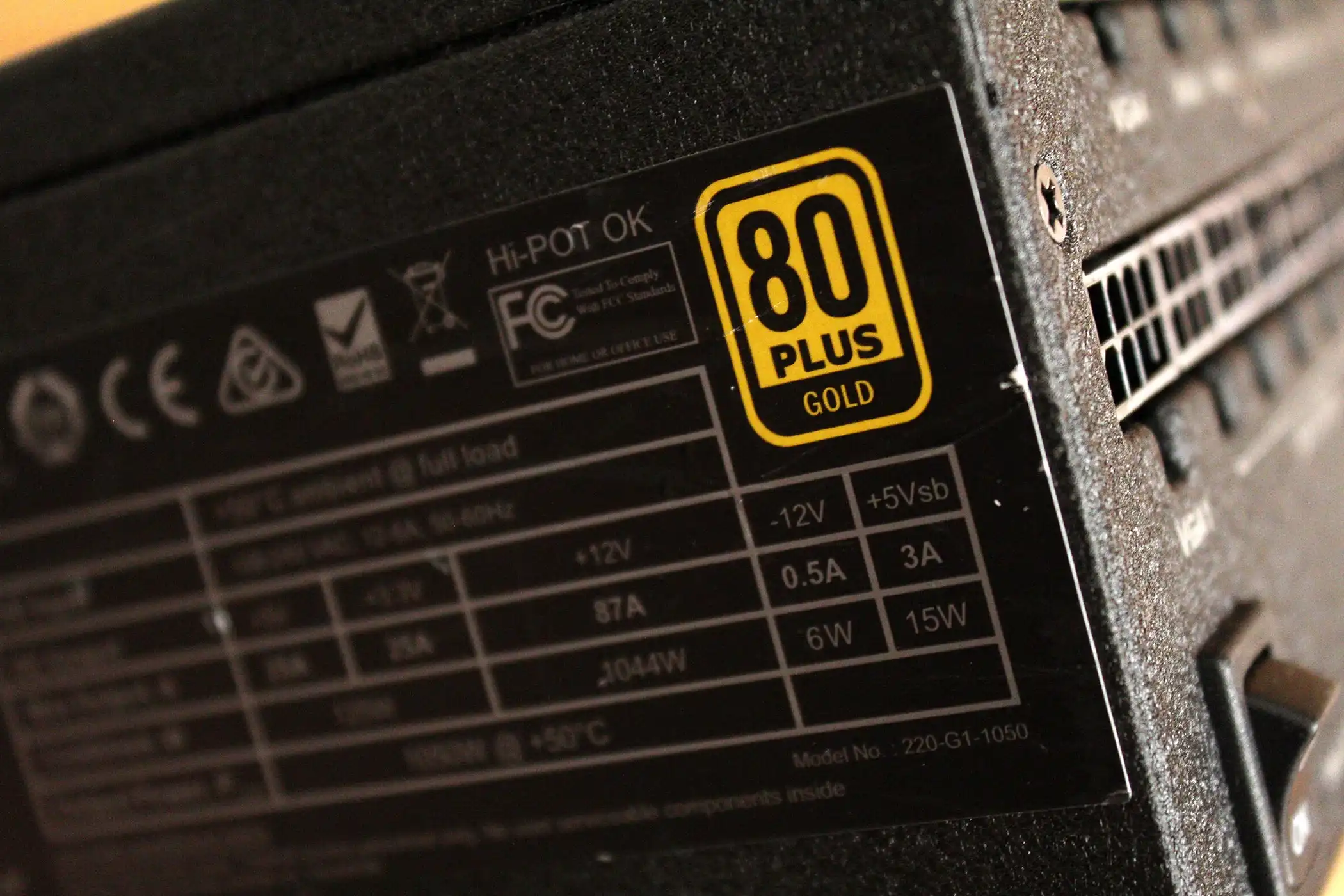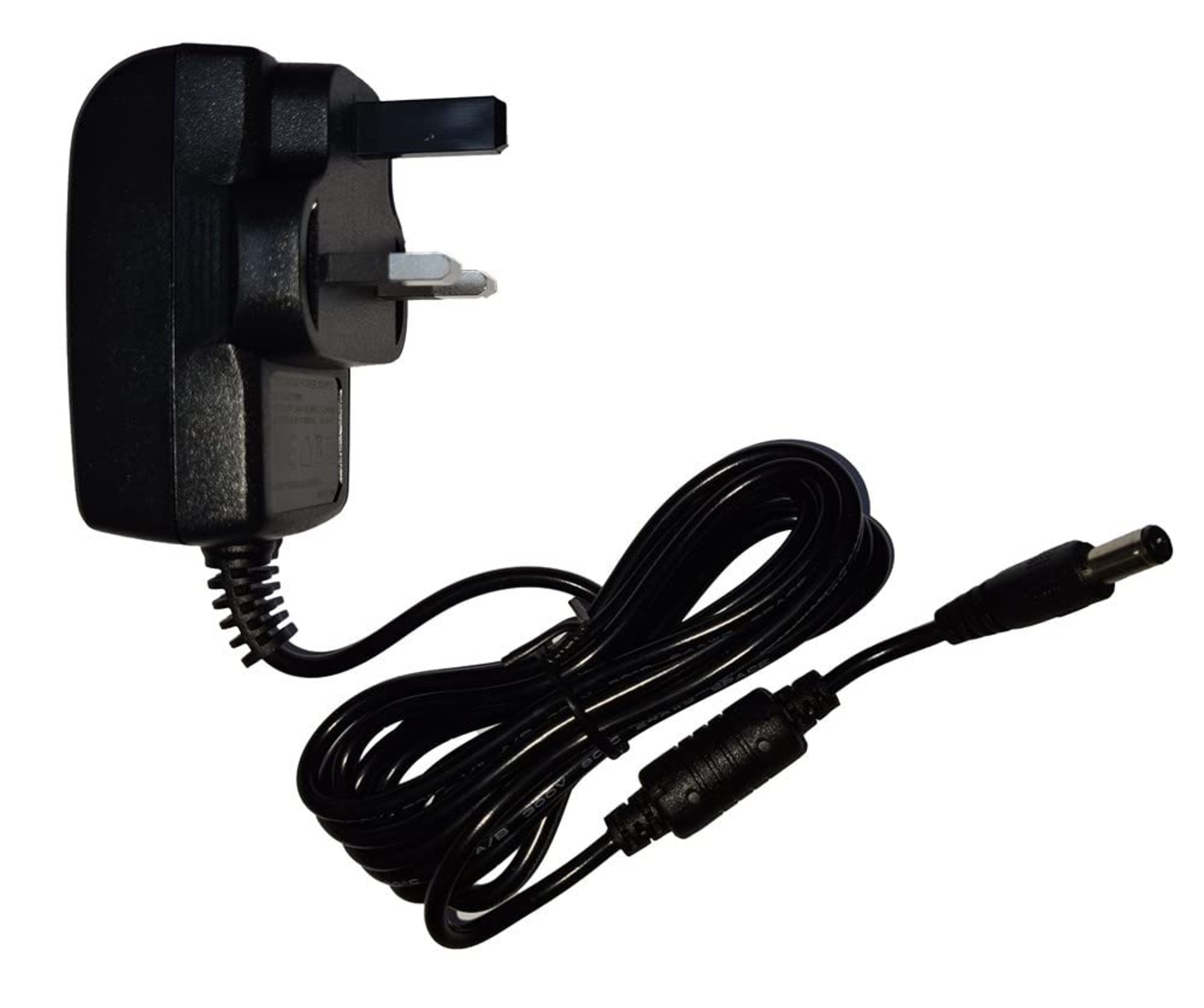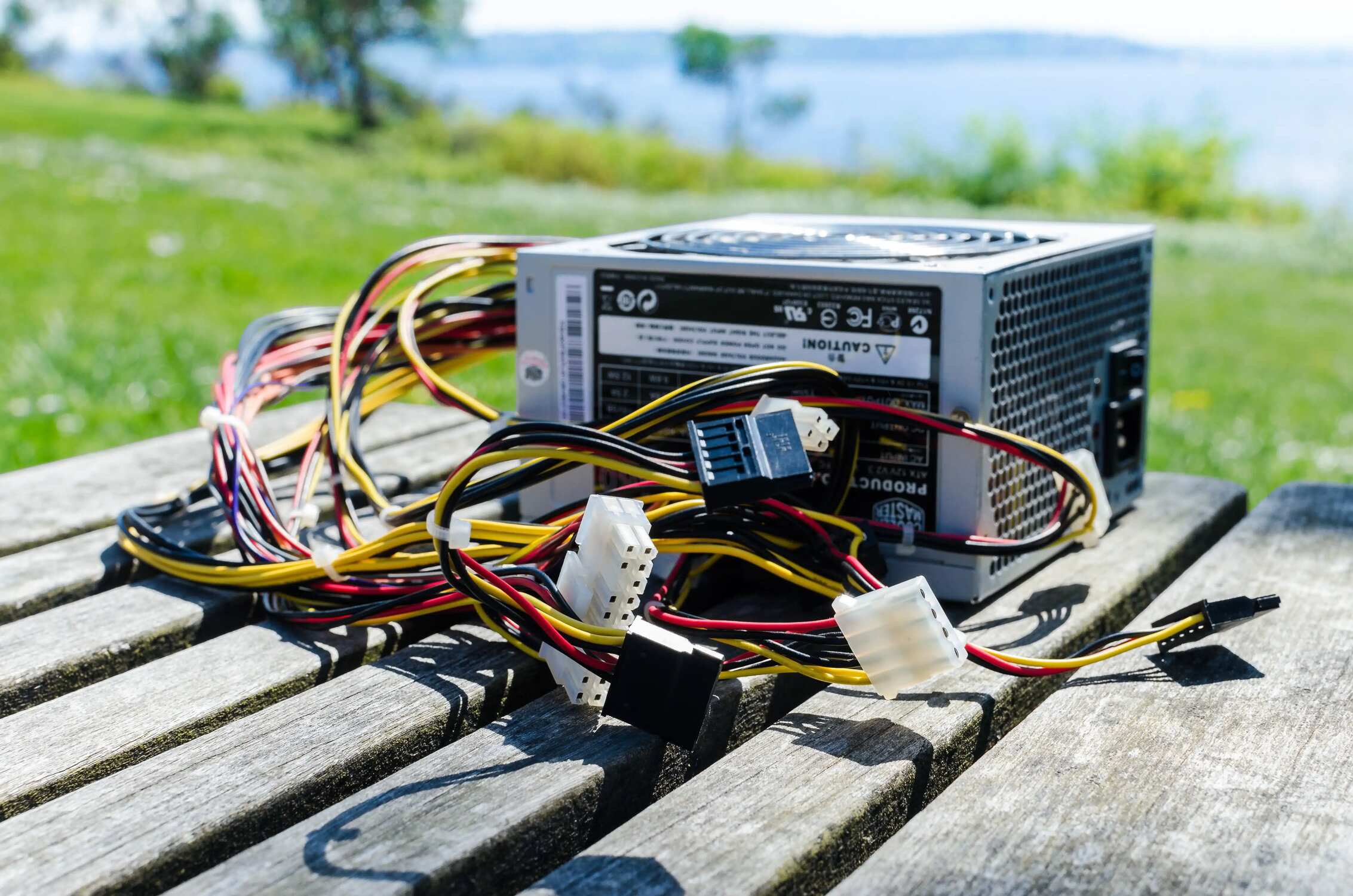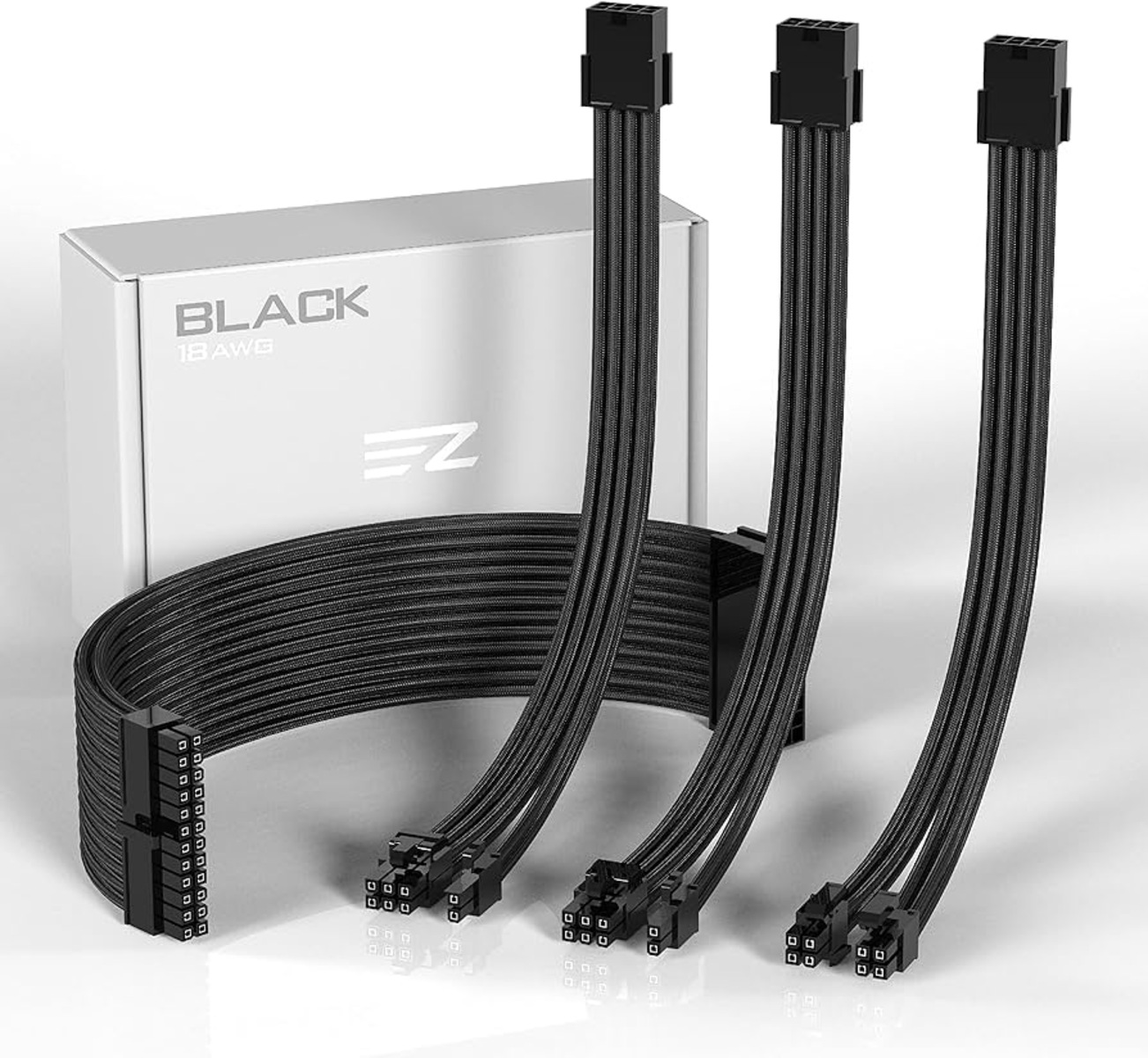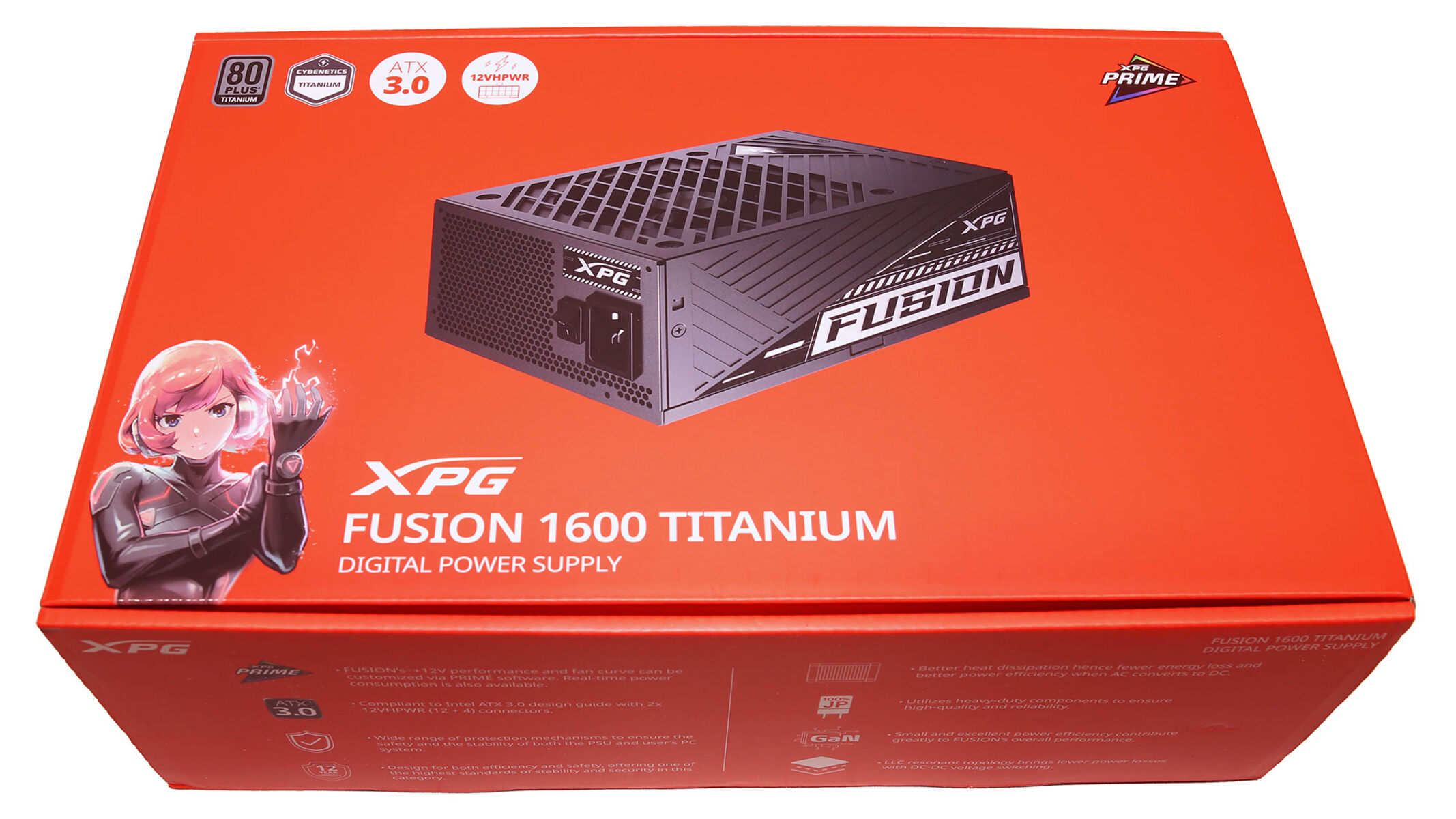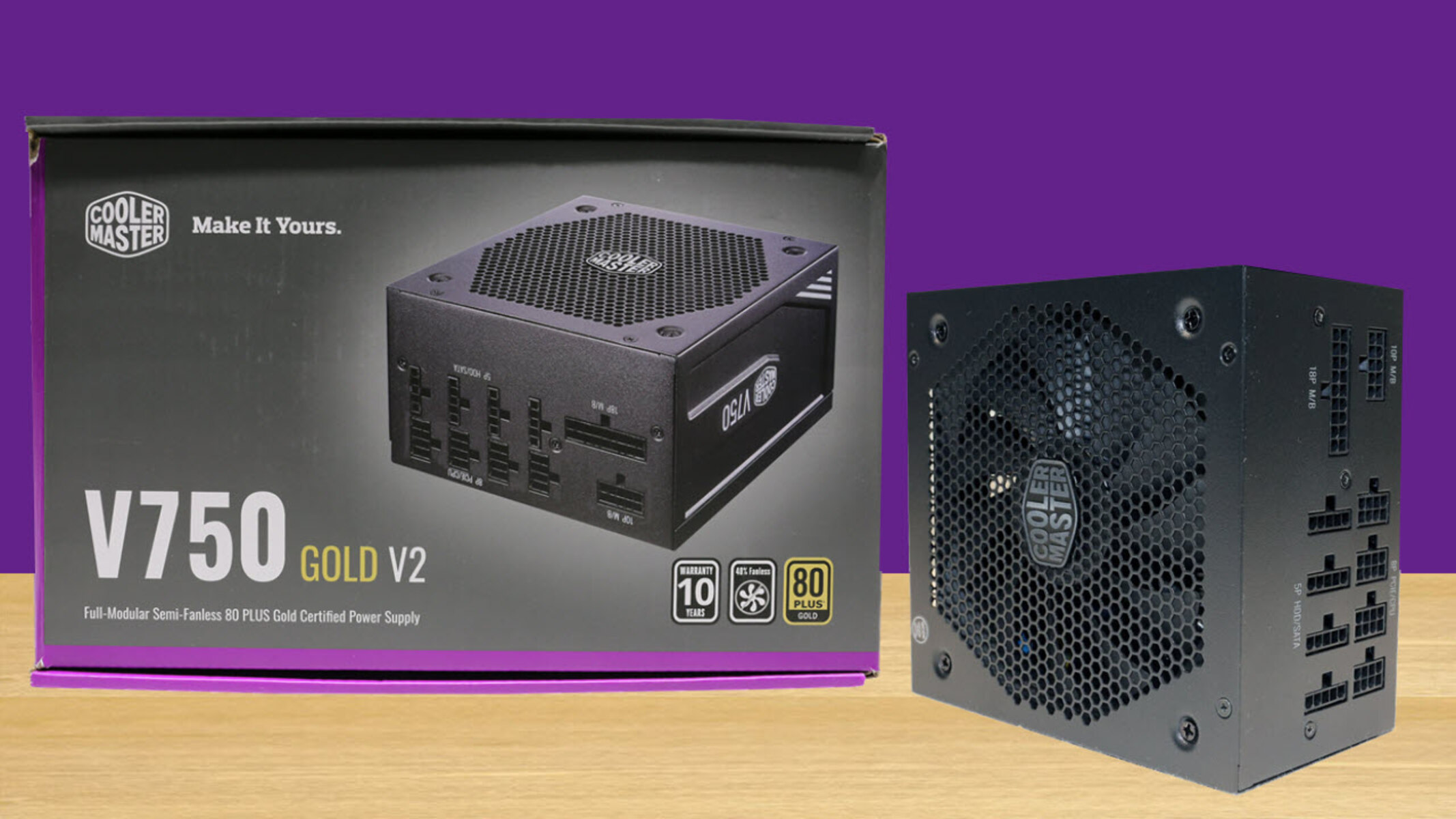Introduction
Welcome to our guide on PSU ratings! When it comes to building or upgrading your computer, one important component to consider is the Power Supply Unit (PSU). The PSU is responsible for supplying reliable and stable power to all the components in your system.
But what does PSU rating mean and why is it important? PSU rating refers to the efficiency and performance of the power supply. It indicates how well the PSU can convert AC power from the wall outlet to DC power used by your computer.
The higher the PSU rating, the more efficiently it converts power and the less energy is wasted. PSU ratings are a crucial aspect to consider when choosing a power supply for your computer, as they can impact not only the performance but also the energy consumption and overall stability of your system.
In this article, we will delve into the different types of PSU ratings, such as the popular 80 Plus ratings, Energy Star ratings, Titanium ratings, and the various Bronze, Silver, Gold, and Platinum ratings. We will also discuss efficiency levels and factors to consider when choosing a PSU rating.
By the end of this guide, you will have a better understanding of PSU ratings, their significance, and be equipped with the knowledge to make an informed decision when selecting the right PSU for your computer needs.
What is a PSU Rating?
A PSU rating refers to the efficiency and performance of a Power Supply Unit (PSU) for a computer. It is an indicator of how well the PSU can convert alternating current (AC) power from the wall outlet to the direct current (DC) power that the computer components require. PSU ratings are important because they can impact the performance, energy consumption, and overall stability of your computer system.
PSU ratings are typically expressed as a percentage, which represents the amount of input power that is used effectively. The higher the PSU rating, the more efficient it is in converting power, and therefore, less energy is wasted in the form of heat. This not only reduces energy costs but also helps to keep the components cool, increasing their lifespan. Additionally, a higher PSU rating means a more stable power supply, reducing the risk of voltage fluctuations that could potentially damage your hardware.
The efficiency of a PSU is influenced by several factors, including the quality of the components used and the design of the power supply itself. Different PSU ratings exist to categorize the level of efficiency achieved by a particular power supply. These ratings provide consumers with a standardized measure to compare different models and brands.
Now, let’s explore the various types of PSU ratings and what they signify.
Types of PSU Rating
When it comes to PSU ratings, there are several types that you may come across in the market. Each type represents a different level of efficiency and performance. Let’s take a closer look at some of the common types of PSU ratings:
1. 80 Plus Rating: The 80 Plus rating system is one of the most widely recognized standards for PSU efficiency. This rating ensures that the power supply operates at a minimum efficiency of 80% at 20%, 50%, and 100% load. The 80 Plus rating is further divided into categories such as 80 Plus White, Bronze, Silver, Gold, Platinum, and Titanium, with each subsequent tier indicating increased efficiency.
2. Energy Star Rating: The Energy Star rating is a certification provided by the Environmental Protection Agency (EPA) in the United States. It guarantees that the power supply meets certain energy efficiency guidelines established by the EPA. Energy Star certified PSUs are designed to minimize power consumption during idle and low-load states, thus conserving energy and reducing electricity bills.
3. Titanium Rating: The Titanium rating is the highest level of efficiency in the 80 Plus rating system. A Titanium-rated PSU operates at a minimum efficiency of 90% or greater at 10% load, 92% or greater at 20% load, 94% or greater at 50% load, and 90% or greater at 100% load. These power supplies are designed for high-performance computers where power efficiency is a top priority.
4. Bronze, Silver, Gold, Platinum Ratings: These ratings are further divisions of the 80 Plus rating system. A Bronze-rated PSU guarantees a minimum efficiency of 82% at 20% load, 85% at 50% load, and 82% at 100% load. Silver, Gold, and Platinum ratings offer progressively higher efficiencies, with Platinum being higher than Gold, and Gold being higher than Silver.
5. Efficiency Levels: In addition to the specific PSU ratings mentioned above, there are also general efficiency levels that can be mentioned, such as “high efficiency,” “ultra-high efficiency,” or “standard efficiency.” These terms give a general idea of the power supply’s efficiency without having specific ratings attached.
It’s important to note that a higher PSU rating usually corresponds to a higher price tag. So, when choosing a PSU rating, you need to consider your own power requirements, budget, and the level of efficiency that aligns with your needs.
Now that we’ve explored the different types of PSU ratings, let’s move on to the factors you should consider when selecting a PSU rating.
80 Plus Rating
The 80 Plus rating system is one of the most well-known and widely used standards for measuring PSU efficiency. This rating system ensures that the power supply operates at a minimum efficiency of 80% at 20%, 50%, and 100% load. The 80 Plus rating is further divided into several categories, including:
- 80 Plus White: This is the entry-level rating in the 80 Plus system. It guarantees a minimum efficiency of 80% at 20%, 50%, and 100% load. While it is the lowest tier, it still offers a significant improvement over non-certified power supplies.
- 80 Plus Bronze: The Bronze rating signifies a minimum efficiency of 82% at 20% load, 85% at 50% load, and 82% at 100% load. This level of efficiency is suitable for most mainstream users and provides a good balance between cost and performance.
- 80 Plus Silver: The Silver rating ensures a minimum efficiency of 85% at 20% load, 88% at 50% load, and 85% at 100% load. Power supplies with this rating are more efficient than Bronze-rated ones and are suitable for users who demand higher energy efficiency.
- 80 Plus Gold: Gold-rated PSUs offer even higher efficiency, with a minimum of 87% at 20% load, 90% at 50% load, and 87% at 100% load. These power supplies are commonly used in gaming rigs and workstations where power consumption and heat generation need to be kept to a minimum.
- 80 Plus Platinum: PSUs with a Platinum rating are designed for high-performance systems that require maximum efficiency. They guarantee a minimum efficiency of 90% at 20% load, 92% at 50% load, and 89% at 100% load.
- 80 Plus Titanium: The Titanium rating represents the highest level of efficiency in the 80 Plus rating system. These power supplies operate at a minimum efficiency of 90% or higher at 10% load, 92% or higher at 20% load, 94% or higher at 50% load, and 90% or higher at 100% load.
It’s important to note that higher-rated PSUs may come with a higher price tag. However, investing in a power supply with a higher efficiency rating can lead to long-term savings by reducing energy consumption and potentially extending the lifespan of your components.
When deciding which 80 Plus rating is right for you, consider your specific power requirements, budget, and the level of efficiency that aligns with your needs. For most users, a Bronze or Silver-rated PSU is sufficient for everyday computing tasks, while gamers and professionals may opt for Gold or Platinum-rated power supplies for their performance-driven systems.
Energy Star Rating
The Energy Star rating is a certification provided by the Environmental Protection Agency (EPA) in the United States. It aims to promote energy efficiency and reduce greenhouse gas emissions by setting energy-saving guidelines for various electronic devices, including power supplies.
To earn the Energy Star certification, power supplies must meet strict energy efficiency requirements established by the EPA. These requirements focus on reducing power consumption during idle and low-load states, where a significant amount of energy can be wasted if not properly managed.
Power supplies with the Energy Star rating are designed to operate efficiently even when the computer is in standby or sleep mode. They employ various techniques such as advanced power management and intelligent fan control to minimize power consumption without compromising performance.
The Energy Star rating can be beneficial for both consumers and the environment. For consumers, it means lower energy bills as the power supply operates more efficiently, consuming less electricity. This can result in significant long-term savings, especially for systems that are frequently in idle or low-power states.
From an environmental standpoint, using Energy Star-rated power supplies helps to reduce overall energy consumption and decrease the carbon footprint associated with power generation. It contributes to sustainability efforts by conserving resources and minimizing greenhouse gas emissions.
When shopping for a power supply, look for the Energy Star logo to ensure that you are choosing an energy-efficient option. Even if a power supply does not have a specific 80 Plus rating, an Energy Star-certified PSU is still likely to offer energy-saving benefits.
It’s important to note that the Energy Star rating is not limited to power supplies and applies to a wide range of electronic devices, including computers, monitors, printers, and more. By opting for Energy Star-certified products, you can play your part in protecting the environment and reducing energy consumption.
Next, we will explore another type of PSU rating: the Titanium rating.
Titanium Rating
The Titanium rating is the highest level of efficiency in the 80 Plus rating system. Power supplies with a Titanium rating offer exceptional energy efficiency, making them ideal for high-performance systems and those demanding the utmost in power efficiency.
A PSU with a Titanium rating guarantees a minimum efficiency of 90% or higher at 10% load, 92% or higher at 20% load, 94% or higher at 50% load, and 90% or higher at 100% load. This means that even at low loads, a Titanium-rated power supply can maintain an impressive level of efficiency, reducing energy waste and operating costs.
Titanium-rated power supplies achieve their high levels of efficiency through a combination of advanced design, premium components, and robust power management. These power supplies minimize energy loss during power conversion and operate more efficiently across a wide range of loads.
While the Titanium rating offers the highest efficiency, it is important to consider whether the increased efficiency justifies the higher cost. For most users, power supplies with Bronze, Silver, or Gold ratings provide a good balance between efficiency and affordability.
However, there are specific scenarios where a Titanium-rated power supply becomes a more viable option. These include power-hungry gaming rigs, overclocked systems, and high-performance workstations that demand maximum power efficiency to ensure stability and reliability.
In addition to higher efficiency, Titanium-rated power supplies often boast additional features such as modular cabling, higher quality components, and advanced cooling systems to maintain optimal performance under heavy loads. These features can enhance the overall reliability and longevity of your system.
Ultimately, the decision to invest in a Titanium-rated power supply depends on your specific needs, budget, and the level of efficiency you prioritize. If you require the highest level of power efficiency and are willing to invest in a top-tier power supply, a Titanium rating can provide peace of mind and performance.
Now that we have covered the types of PSU ratings, let’s move on to discussing the different efficiency levels within the 80 Plus rating system.
Bronze, Silver, Gold, Platinum Ratings
Within the 80 Plus rating system, there are multiple levels of efficiency represented by the Bronze, Silver, Gold, and Platinum ratings. These ratings provide further insights into the overall efficiency and performance of a power supply.
Bronze Rating: A power supply with a Bronze rating guarantees a minimum efficiency of 82% at 20% load, 85% at 50% load, and 82% at 100% load. Bronze-rated power supplies offer a significant improvement over non-certified power supplies, ensuring efficient power conversion and reducing energy waste.
Silver Rating: The Silver rating signifies a higher level of efficiency than Bronze, with a minimum of 85% at 20% load, 88% at 50% load, and 85% at 100% load. Silver-rated power supplies are designed to provide even better energy efficiency, leading to reduced electricity consumption and lower energy bills.
Gold Rating: Gold-rated power supplies are renowned for their impressive efficiency levels. They guarantee a minimum efficiency of 87% at 20% load, 90% at 50% load, and 87% at 100% load. Gold-rated power supplies are commonly used in gaming rigs, high-performance workstations, and other demanding systems where efficiency and stability are crucial.
Platinum Rating: Power supplies with a Platinum rating offer an even higher level of efficiency. They operate at a minimum efficiency of 90% at 20% load, 92% at 50% load, and 89% at 100% load. Platinum-rated power supplies are typically preferred by professionals, enthusiasts, and users who prioritize power efficiency and want to maximize energy savings.
The Bronze, Silver, Gold, and Platinum ratings represent different tiers of efficiency within the 80 Plus rating system. As the rating increases, so does the power supply’s efficiency, reducing energy waste and heat generation. However, it’s worth noting that higher-rated power supplies generally command higher prices, so it’s essential to consider your specific needs and budget when choosing a power supply rating.
In general, Bronze and Silver ratings are sufficient for everyday computing needs, providing a good balance between affordability and efficiency. Gold and Platinum ratings offer even higher efficiency and are suitable for power-hungry systems, gaming enthusiasts, content creators, and professionals who require maximum performance and energy efficiency.
When selecting a power supply, it’s important to consider your system’s power requirements, the components you plan to use, and your overall budget. By choosing the appropriate rating, you can ensure a stable and efficient power supply that meets the needs of your specific computer setup.
Now that we have covered the different PSU ratings, let’s move on to discussing some key factors to consider when choosing a PSU rating.
Efficiency Levels
In addition to the specific PSU ratings mentioned earlier, you may also come across terms that describe the efficiency level of a power supply without specifying a particular rating. These general efficiency levels can provide a rough idea of the power supply’s efficiency. Let’s explore them:
High Efficiency: Power supplies labeled as “high efficiency” generally meet the minimum requirements of the 80 Plus Bronze rating. Although they might not have an official certification, they are designed to operate efficiently and provide reliable power to your system.
Ultra-High Efficiency: Power supplies labeled as “ultra-high efficiency” are typically those that meet or exceed the requirements of the 80 Plus Gold or Platinum rating. These power supplies offer excellent efficiency, ensuring optimal power conversion and reducing energy waste.
Standard Efficiency: Power supplies labeled as “standard efficiency” generally refer to those that do not meet the requirements of any specific PSU rating. While they may still provide reliable power, they might not offer the same level of efficiency as their higher-rated counterparts.
While specific PSU ratings provide clear benchmarks for efficiency, these general efficiency levels offer a broad indication of a power supply’s performance. It’s important to note that power supplies labeled with these terms may not have undergone the rigorous testing and certification process of specific rating systems.
When considering power supplies with efficiency levels, it’s crucial to evaluate their specifications, read reviews, and consider reputable brands known for producing high-quality products. Look for power supplies that have features such as active power factor correction (PFC), high-quality components, and reliable build quality to ensure stable and efficient power delivery.
Remember, choosing a power supply with higher efficiency can lead to cost savings in the long run by minimizing energy consumption and reducing heat generation. However, it is essential to strike a balance between efficiency and your specific budget and requirements.
Now that we have covered the various efficiency levels, let’s move on to discussing important factors to consider when choosing a PSU rating.
Factors to Consider when Choosing a PSU Rating
When selecting a PSU rating for your computer, several key factors should be taken into consideration. These factors will help you choose a power supply that meets your system’s requirements, delivers reliable performance, and aligns with your budget. Let’s explore these factors:
1. Power Requirements: The first step in choosing a PSU rating is to assess your system’s power requirements. Consider the components you plan to use, such as the CPU, GPU, storage drives, and any additional peripherals. Each component has a specific power requirement that contributes to the overall power consumption of your system. Ensure that the power supply you choose can deliver enough power to meet these requirements, taking into account any potential future upgrades.
2. Budget Considerations: PSU ratings come at different price points, with higher-rated power supplies often commanding a higher price. Set a budget for your power supply and consider the level of efficiency you really need. While higher efficiency can lead to long-term energy savings, it’s important to find a balance that aligns with your budget without compromising the stability and reliability of your system.
3. Computer Usage: Consider how you will be using your computer. If you are building a gaming rig or a high-performance workstation that will undergo heavy usage and demanding tasks, opting for a higher-rated power supply such as Gold or Platinum can provide better stability and power efficiency. However, for everyday computing and basic office tasks, a Bronze or Silver-rated power supply may suffice.
4. Brand and Quality: When it comes to power supplies, it’s important to choose a reputable brand that has a history of producing reliable and high-quality products. Look for power supplies that have good user reviews, warranties, and certifications. Quality components and solid build construction can ensure a stable power supply that will last long and deliver consistent performance.
5. Modular or Non-Modular: Consider whether you prefer a modular or non-modular power supply. Modular power supplies allow you to connect only the cables you need, reducing cable clutter and improving airflow in your system. This can make cable management easier and provide a cleaner and more organized build. Non-modular power supplies come with all cables attached, which may be suitable if you have a smaller system or prefer the convenience of not having to deal with additional cables.
By considering these factors, you can make an informed decision when selecting a PSU rating that best suits your system’s requirements and your personal preferences.
Now that we have covered the important factors to consider when choosing a PSU rating, you have the knowledge to make an informed decision that will ensure a stable and efficient power supply for your computer.
Power Requirements
Understanding the power requirements of your computer is essential when choosing a PSU rating. Different computer components have specific power needs, and it is crucial to ensure that your power supply can meet these requirements without straining or becoming overwhelmed. To determine your system’s power requirements, consider the following factors:
1. CPU: The Central Processing Unit (CPU) is one of the most power-hungry components in a computer. Different CPUs have varying power demands, so it is important to know the power consumption of your chosen CPU model. This information is usually provided by the manufacturer.
2. GPU: If you are planning to use a dedicated graphics card, also known as a Graphics Processing Unit (GPU), for gaming or graphics-intensive tasks, ensure that you factor in its power requirements. High-performance GPUs can consume a significant amount of power, so choose a power supply that can handle the GPU’s power demands.
3. Storage Drives: Hard Disk Drives (HDDs) and Solid-State Drives (SSDs) contribute to your system’s power consumption, although their power requirements are generally lower compared to the CPU and GPU. Consider the number of drives you plan to use and factor in their power needs accordingly.
4. RAM and Other Components: Random Access Memory (RAM), motherboard, cooling fans, and other peripherals also consume power, although their power requirements are relatively minimal compared to the CPU and GPU. Nonetheless, it is important to account for their power needs when calculating the overall power consumption of your system.
Once you have identified the power requirements of each component, you can add them up to determine the total power consumption of your system. It is recommended to choose a power supply that can comfortably handle the total power requirements of your components while leaving some headroom for future upgrades or increased power demands.
Keep in mind that power supply ratings, such as the Bronze, Silver, Gold, and Platinum ratings, are indicative of their efficiency, not their power output. A higher-rated power supply does not necessarily mean it has a higher power output capability. Therefore, it’s essential to match the power requirements of your components with the power supply’s maximum output capacity.
By considering the power requirements of your system and choosing a power supply that can handle those demands, you can ensure a stable and reliable power delivery to your computer’s components.
Now that we have covered the importance of considering power requirements, let’s move on to discussing another factor to consider when choosing a PSU rating: budget considerations.
Budget Considerations
When choosing a PSU rating, budget considerations play a significant role. Power supplies with higher ratings, such as Gold or Platinum, often come with a higher price tag compared to lower-rated options. It is important to strike a balance between the level of efficiency you desire and the budget you have allocated for your power supply purchase.
Consider your specific needs and usage requirements. If you have a basic computer setup for everyday tasks such as web browsing, word processing, and multimedia consumption, a Bronze or Silver-rated power supply may be sufficient. These power supplies offer a reasonable level of efficiency at a more affordable price point.
However, if you are a gamer, content creator, or professional who requires high-performance computing or runs power-hungry applications, investing in a higher-rated power supply may be worth considering. Gold or Platinum-rated power supplies offer enhanced efficiency and stability, which can be beneficial for demanding tasks and intensive workloads.
Remember that while higher-rated power supplies provide greater efficiency, the cost difference between, for example, a Bronze-rated and Gold-rated PSU may take some time to recoup in terms of energy savings. Assess your long-term goals and consider if the added efficiency justifies the initial investment.
It is also important to consider the overall cost of your computer build. Allocating a sizeable portion of your budget to a power supply may limit your funds available for other critical components, such as the CPU, GPU, or storage. Assess your priorities and allocate your budget accordingly to ensure a well-balanced system that meets your needs.
Lastly, keep in mind that while it is tempting to opt for a cheaper power supply, compromising on quality and reliability can have negative consequences for your entire system. It is important to choose a reputable brand with good user reviews and a reliable warranty policy. A high-quality power supply can offer better protection for your components and ensure stable power delivery.
By carefully considering your budget and the level of efficiency you require, you can choose a PSU rating that offers the best balance of performance, efficiency, and affordability for your specific needs.
Now that we have discussed budget considerations, let’s move on to another important factor: computer usage.
Computer Usage
Considering your specific computer usage is crucial when selecting a PSU rating. The power supply requirements can vary depending on the type of tasks you perform and the overall demands of your computing activities. Let’s explore how different computer usage scenarios can influence your choice of PSU rating:
Everyday Computing: If you primarily use your computer for everyday tasks such as web browsing, email, word processing, and multimedia consumption, a Bronze or Silver-rated power supply should suffice. These power supplies offer a good balance between affordability and efficiency for typical home or office use.
Gaming: Gamers often demand high-performance systems with powerful CPUs and graphics cards. In this case, a power supply with a Gold or even Platinum rating can be beneficial. These power supplies provide better efficiency and stability, ensuring consistent power delivery to your components and optimizing gaming performance.
Content Creation and Editing: If you work with demanding tasks such as video editing, graphic design, or 3D rendering, your system will require higher processing power. Investing in a Gold or Platinum-rated power supply can ensure stability and efficiency during resource-intensive workloads, minimizing the risk of power-related issues that could impact your projects.
Workstations and Servers: Professionals who rely on powerful workstations or servers for intensive computational tasks, scientific simulations, or virtualization need robust power supplies. Platinum-rated power supplies can provide the necessary efficiency and stability to handle the sustained loads of such systems, ensuring smooth operation and reliable performance.
Identifying your specific computer usage will help you determine the level of power supply efficiency required for optimal performance and stability. However, it’s important to strike a balance between efficiency and budget. Consider the extent to which your tasks demand high performance and weigh it against the cost of a higher-rated power supply.
Remember, choosing a high-efficiency power supply that exceeds your needs may waste your budget on unnecessary features. On the other hand, selecting a power supply with insufficient efficiency may compromise the stability and longevity of your system.
By aligning the PSU rating with your specific computer usage, you can ensure that your power supply meets the demands of your tasks while considering the budget and overall efficiency requirements.
Now, let’s move on to the importance of considering the brand and quality of the power supply.
Conclusion
Choosing the right PSU rating is an essential consideration when building or upgrading your computer. PSU ratings indicate the efficiency and performance of the power supply, impacting energy consumption, system stability, and overall performance.
Throughout this guide, we have explored various PSU ratings, including the 80 Plus ratings (Bronze, Silver, Gold, Platinum, Titanium), Energy Star, and general efficiency levels. We discussed the importance of considering factors such as power requirements, budget considerations, computer usage, and brand quality when selecting a PSU rating.
Understanding the power requirements of your system and choosing a power supply that can meet those demands is critical. It ensures stable and reliable power delivery to your components. Additionally, considering your budget allows you to strike a balance between efficiency and affordability.
Take into account your specific computer usage as well. The tasks you perform, such as gaming, content creation, or everyday computing, will influence the PSU rating needed for optimal performance and stability.
Lastly, prioritize reputable brands and high-quality power supplies to ensure reliability and longevity for your computer system. Choosing a power supply from a trusted manufacturer can provide peace of mind and protect your components from potential power-related issues.
In conclusion, selecting the right PSU rating involves careful consideration of multiple factors, including power requirements, budget, computer usage, and brand quality. By striking the right balance and choosing a PSU rating that aligns with your needs, you can ensure a stable and efficient power supply that supports the performance and longevity of your computer.







